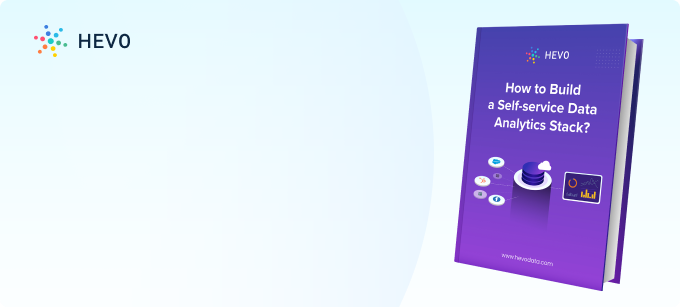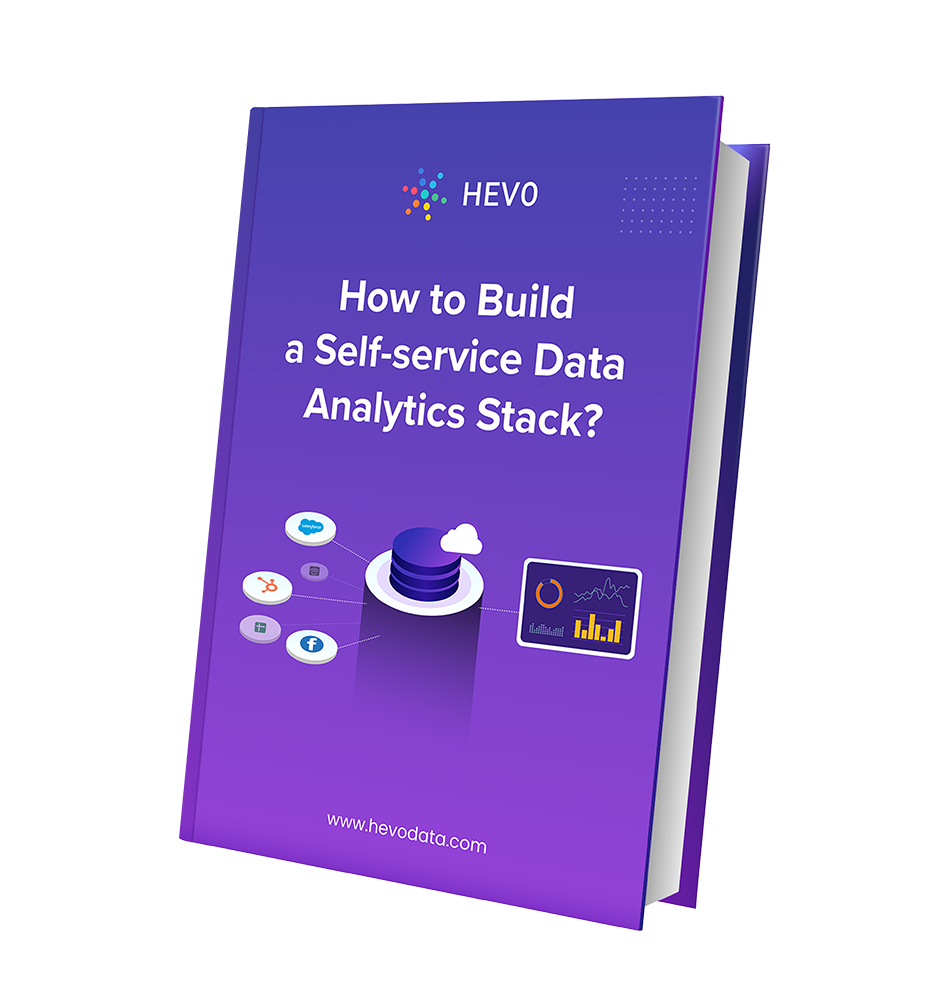Data is omnipresent with lots of hidden insights. Data analysis and interpretation can be extremely tasking and time-consuming without correct tools, and this is where Google Data Studio saves the day. Google Data Studio is a business intelligence tool that is extremely useful for those who want to perform an insightful analysis. It transforms data into an easily understandable and informative form.
This article aims at providing a step-by-step guide to help you set up Google Data Studio Automation and generate highly informative business reports not only with ease but also in real-time.
Table of Contents
Introduction to Google Data Studio
It is a free visualization tool that can help you build effective and insightful reports with the help of its interactive dashboard. It allows bringing in data from multiple sources and lets you expand reports as per your business needs. You can visualize data using a bar chart, line graphs, etc. and easily share these reports. It supports dynamic reporting and hence can be used to generate reports that get updated in real-time.
Benefits of creating reports using Google Data Studio
Multiple reasons make Google Data Studio, the right tool for automated reporting:
- Multiple Sources: One of the most significant features of Google Data Studio, is the ability to connect with a large number of data sources. It pulls data automatically from the desired source in minutes. Google Data studio supports connectors that can connect with more than 17 different sources such as BigQuery, MySQL, AdWords, Analytics, etc.
- Customisable: Google Data Studio not only lets you load data from multiple sources but also customize it using its interactive dashboards. You can easily drag and drop elements, add/remove texts, make data informative using pie charts, bar charts and brand it as per your needs.
- Collaboration: Google Data Studio lets you work in a collaborated manner. You can set permissions, share dashboards with your teammates and let them contribute in real-time.
- Live Dashboards: Google Data Studio supports real-time updates. All you need to do is connect with your desired source and all your data will be updated automatically, keeping you updated and helping you monitor KPIs in real-time.
- Free of Cost: Google Data Studio is available for free to every user.
For further information on Google Data Studio, you can check the official site here.

Prerequisites
- Working knowledge of Google Data Studio.
- Google Data Studio account.
Setting up Google Data Studio Automation
To set up Google Data Studio Automation, you can begin by connecting with your desired data source and then building your business reports. You can further make your reports insightful by adding multiple visualizations to it. Another important aspect of Google Data Studio Automation is the ability to schedule e-mail deliveries for your team members. This ensures everyone is on the same page.
- Connecting Google Data Studio to your desired source
- Building reports in Google Data Studio
- Adding visualizations to Google Data Studio reports
- Scheduling e-mail delivery for Google Data Studio reports
Free up your time by offloading routine data requests to Hevo Answers. Get instant insights, automate ad-hoc queries, and focus on high-impact analytics.
🔹 Natural Language Queries – Ask in plain English, no SQL needed
🔹 Instant AI-Powered Insights – Get accurate answers in seconds
🔹 Seamless Data Integration – Connect to Salesforce, Shopify, Google Ads & more
🔹 Enhanced Productivity – Reduce reporting workload, focus on strategy
Connecting Google Data Studio to your desired source
You can connect to Google Data Studio using the following steps:
- Step 1: Signing in to Google Data Studio
- Step 2: Connecting to a data source
- Step 3: Establishing a connection
Step 1: Signing in to Google Data Studio
Go to the official Google Data Studio site and sign in using your Google account. Once you have signed in successfully, you will reach the reports page. To create a new report, click on the blank report option as follows:
Step 2: Connecting to a data source
A small pop-up with three options namely report, data source, and explorer will now appear. Click on the data source option to bring in your data from a source of your choice.
A list of google connectors for various sources will show up, select the desired source from these options. You can even search for a source with the help of the search bar located at the top.
Step 3: Establishing a connection
Once you have selected the source, you will be asked to authorize it. Click on the authorize button to allow access to the data stored in your desired source. For example:
This is how you can connect with your desired data source and continue setting up Google Data Studio Automation.
Building reports in Google Data Studio
Once you have established a connection between Google Data Studio and your data source, you can easily build reports using the following steps:
Step 1: Creating a blank report
Go to the official Google Data Studio site and sign in using your Google account. Once you have signed in successfully, you will reach the reports page. This page provides you with a brief overview of reporting in Google Data Studio with the help of some samples. Go through them and understand the different kinds of reports that can be generated and the various sources from where you can bring data in.
To create a new report, click on the blank report option as follows:
Step 2: Choosing the desired connector
You will now be prompted to add a data source to start analyzing your data. Click on the desired connector to establish a connection and load in your data.
For example, if you want to connect with Google Sheets, you can do as follows:
Step 3: Building the report
Once you have connected with your data source, you will reach the configurations page. Configure your connection properly to access your data. For example, once you connect with Google Sheets, you will have to select the desired worksheet and decide whether you want to include headers or not as follows:
Similarly, you can make the necessary configurations and start building your reports. This is how you can build reports & continue setting up Google Data Studio Automation.
Adding visualizations to Google Data Studio reports
Google Data Studio allows adding visualizations in a matter of minutes. Use the insert button (located above the report) to select the desired type of visualization.
To add a chart, click on the “add a chart” button. A drop-down list of charts will now show up. Select the desired type of chart, such as a line chart from the available choices.
To make any modifications, click on the chart and make the desired changes such as dimensions, metrics, etc. You can even add filters to your chart as per the need.
To change the type of the chart, delete the existing one. Use the add a chart option and select the desired type, such as a bar chart or any other.
Bar charts are displayed horizontally by default. To change the orientation, right-click on the chart and then select the style option from the properties window. You can now change the orientation to vertical.
You can define a date range to specify the time, you want to take the data from. Click on the chart and select the default date range option from the properties window. You can now select the desired range and work with data that has time-related metrics.
This is how you can visualize your reports and continue setting up Google Data Studio Automation.
Scheduling e-mail delivery for Google Data Studio reports
You can share the reports created using Google Data Studio with your team in an automatic & regular way by scheduling e-mail deliveries. To do this, you must be the owner or must have the editor access for the report. You can do this as follows:
Select the share button from the top-right corner and select the schedule email delivery option.
A new dialogue box called email delivery will now show up. Provide the following details carefully:
- To: Provide the email address of all the team members you want to share the report with.
- Subject: Enter the subject of the email.
- Message: Write a short message, explaining the propose of the mail.
- Start Time: Enter the date and time. Carefully enter the time at which you want the emails to be delivered to all your teammates.
This is how you can schedule e-mail deliveries and set up Google Data Studio Automation for your reports.
Limitations of Google Data Studio
- Google Data Studio allows fetching the data from only one source at a time. This prevents the blending of data from multiple sources and can affect the analysis.
- Google Data Studio can help bring in data from various sources, however, it doesn’t query real-time data. This can be achieved by first exporting real-time data as a Google sheet and then using it in Google Data Studio.
Conclusion
This article teaches you how to set up Google Data Studio Automation and easily prepare informative and insightful business reports that can drive your business forward. It provides in-depth knowledge about the concepts behind every step to help you understand and implement them efficiently. These methods, however, can be challenging especially for a beginner & this is where Hevo saves the day.
Hevo Data, a No-code Data Pipeline helps you transfer data from a source of your choice in a fully-automated and secure manner without having to write the code repeatedly. Hevo with its strong integration with 150+ sources & BI tools, allows you to not only export & load data but also transform & enrich your data & make it analysis-ready in a jiffy.
FAQ on Google Data Studio Automation
1. Can you automate Google Data Studio?
You can automate data updates and report refreshes using Google Data Studio’s integration with Google Sheets or through API-based solutions.
2. Is Google Data Studio discontinued?
No, Google Data Studio is not discontinued; it has been rebranded as Looker Studio.
3. How do I implement Google Data Studio?
Connect your data sources to Google Data Studio, create and design reports, and share them via links or embed them on websites.
Want to take Hevo for a spin? Sign up for a 14-day free trial and experience the true power of Hevo.
Tell us about your experience of setting up Google Data Studio Automation for your business reports! Share your thoughts in the comments section below.





